I was going to start this part of the series with some chord tone exercises. Instead, I’m going to sidetrack a bit first and explain a few things about scales and guitar solos. This won’t be in depth, just an outline of things you should realise which will hopefully make you think a little differently about scales.
First things first, there’s no single right or wrong way of doing things. There is however some generalisations we can make, mostly based on expectations such as we expect a slow minor blues to sound like a slow minor blues. We expect jazz to often play a lot of fast notes and add some “out-of-place” sounds. We expect easy listening pop to sound melodic and (usually) not too fast. Etc.
These things matter because they all require different soloing ideas. There’s no such thing as “here’s a chord progression – here’s the scale to use”. For example, take a I-IV-V blues progression with the chords C, F and G – some musicians will use C minor pentatonic scale, some will use C major, some will use both and mix them together. This idea works for blues. It won’t necessarily work for a melodic pop song using the same chords, which may sound completely wrong with a minor pentatonic scale. Not definitely, but probable. We don’t really need to worry too much about the theory of this, just accept that some genres use different ideas that might clash or sound wrong with other styles of music. It’s all about expectation, we expect it simply because we’ve heard it so many times that it becomes normal to our ears. With jazz we expect to hear a lot of clashing notes, with melodic pop we don’t, generally.
While all of this can’t be explained in detail, in a single article, what can be understood is the general theory of scales, key, chords, dissonance and consonance. These things are really all that matter and apply to all styles of music at least so far as they will help you understand the differences between genres. I’m going to run through these things quite quickly so if you get lost then it might help to read through the sections on chord theory and “chords in key” first. It can all be found here.
https://www.guitar-chords.org.uk/chord-theory/chord-theory.html
The basic principles of using a scale for a solo
It all starts with the scale, not the chords. Let’s use the C major scale. The notes in this scale are:
C, D, E, F, G, A, B
Chords are built by stacking notes from a scale in thirds. In simple terms this means every alternate note. Basic chords are triads consisting of three notes. If we start with C and then grab each third note from there we end up with C, E, G. This happens to be the notes in a C major chord. Next we start with D and then grab every third note from there. We end up with D, F, A. This happens to be the notes in a D minor chord. Like I said, I’m moving fast here. If you want more in depth then read the chord theory section in the link above.
When we build the chords from the scale in thirds, starting with each note, this is what we end up with.
C E G = C major
D F A = D minor
E G B = E minor
F A C = F major
G B D = G major
A C E = A minor
B D F = B diminished.
The general theory goes something like this … all of these chords belong to the key of C major. If we have a chord progression that uses all, or any, of these chords then we can use the C major scale for our solo because everything belongs together. It’s sort of true but it’s also a bit misleading. This is where consonance and dissonance come in.
There’s no need to complicate what consonance and dissonance are – just think of them as good or bad sounding notes. When two or more notes sound good together, we can say they are more consonant. When two or more notes clash and sound horrible, they are more dissonant. To some extent, “good or bad” is subjective and there are varying degrees between the two. Dissonance isn’t always a bad thing. Sometimes it’s horrible, sometimes it creates tension in a good way and sometimes it actually sounds nice. Other times it can go completely unnoticed. Let’s do some examples.
In this above example all of the notes that make up the c major chord are consonant, they work very well in harmony.
When we play the Eb and open E together, most of us could agree these two notes clash. When they are only a semitone apart they sound worse than when an octave apart, although even at an octave they still clash somewhat. Now let’s listen to an Emaj7 chord…
This chord sounds pretty sweet, most of us would agree, yet it contains an E and an Eb.
I could go on with many more examples but that’s enough for you to get the picture. The bottom line is it all depends on context.
All of this plays a big part in how you use scales with your solos and why chord tones can really improve things. Things aren’t always as simple as “pick a scale and play any of the notes at random”. If you are struggling to make your scale solos sound any good, this might well be the problem.
OK, back to the general theory of chords and scales in key, which in common teachings suggests that when all of the chords belong to a common key, we can use the scale of that key for our solo. We’ll use the I-IV-V as an example as it’s about the most common chord progression and these three chords combined use up all of the notes in the scale.
C Major scales notes: C D E F G A B
C major chord notes = C E G
F major chord notes = F A C
G major chord notes = G B D
As we can see, between these three chords we have all of the notes in the C major scale. Let’s take a look at this scale played over the three chords, first in eighth notes, then quarter notes.
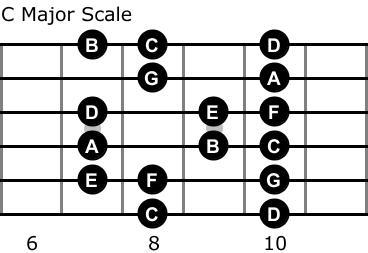
This is a good example of dissonance going unnoticed. The faster the scale is played, the less noticeable there is any dissonance. When beginners and the less experienced use scales for their solos, they generally “noodle” through the notes in a step fashion. This gets boring and predictable and the most common advice here (which is good advice) is to break it up into phrases and add some space. The problem this creates is not knowing when or where to pause. If you stop on a note that is dissonant then it suddenly sounds very amateurish, very quickly. You need to know (or be able to hear) when you should hang on to a note, or not.
Just because all of the scale notes and chords belong to the same key doesn’t mean all notes will fit all of the time. Remember the dissonant sound of E and Eb? Well, we still happen to have two places in the major scale where notes are only a semitone apart. If these notes clash with any of the notes in the chord then we can end up sounding like something went wrong.
For example, The note C is in the F-chord as well as C-chord, so if we land on a B note over these chords (one semitone from the C) then it might sound like something has gone wrong. We might get the same if we play an E over the F chord. There are quite a few possibilities. Some will sound OK, some might not. Let’s take a listen to some of these notes over each chord change.
That don’t sound too great does it – yet we’re only using notes belonging to the scale. There’s no set rule here, at least not any that’s worth trying to analyse. Some notes sound like they clash, some don’t and it’s not a constant. Depends on speed, note duration, which note was played previously, which note follows and many other possible reasons. Notes don’t even need to belong to a scale. Non-scale notes will generally sound bad, but again, it depends on how they are used. Take a listen to the following example. We’ll play the minor third over each major chord.
Now listen to the same notes used for effect by not hanging on them for too long and letting them resolve to a consonant note in the chord, i.e., minor 3rd to major 3rd.
This kind of effect will usually work with pretty much any note, not just minor to major 3rds.
Hopefully you are beginning to see why things aren’t as simple as picking a scale to solo with. A scale is just a set of notes but you still need to be aware of these things otherwise you might forever wonder why your solos and scale choices aren’t working as you expected. The more you know about each underlying chord, the more you will be able to avoid bad notes and target good ones. Of course there is the common saying “just use your ears,” and yes you should, but a little knowledge goes a long way. The more you know about this kind of stuff the quicker your listening skills will improve.
It’s also a lot easier to target notes that you know will work, as opposed to looking out and thinking ahead for notes that you need to avoid, or rely completely on “using your ears”. When you can see the value in practising something it makes it a lot easier to get on with it. If you can’t see the point in what you are learning then you are more inclined to not bother with it, after all, practice can be a lot of hard work.
What all of this gives you is simply a different way of thinking about scales. We’ve seen that the three chords in a I-IV-V use up all of the notes in the major scale. Therefore, if we target nothing but the three notes in each chord, by the time we’ve got back to the first chord we’ve essentially used the entire major scale, we’ve just used it more thoughtfully. Obviously this will get boring very quickly but we still have more ideas to mess around with.
We know that we can pretty much use scale runs without hitting any bad notes as long as the scale keeps moving. It’s only when we stop moving and pause for a moment that we need to think more about the note we land on. We also have the outside notes (leading tones) to play with which can be used to good effect to add some interest. The bottom line is the more ideas we have to play around with and the more we have an understanding of these things, the quicker we improve. It just takes practice. It’s a lot of information to take in and apply to actual real world playing, but the more you just keep doing it, the quicker it will all make sense.
Of course, there’s still the problem that all of the above assumes not only that the song is in one single one key, but also that you can recognise when the chords all belong. Not too difficult for a I-IV-V but when there’s a lot of chords or the chords don’t all belong to the same key – then things can get a bit trickier but will be much easier to digest once you have enough experience with the common I-IV-V chord progressions. This will need to be a lesson for another day, or if you’ve already got my Guitar Theory book, I go into a bit more detail about it in there.
In part 4 we’ll get into some basic exercises and examples to get you used to note targeting.



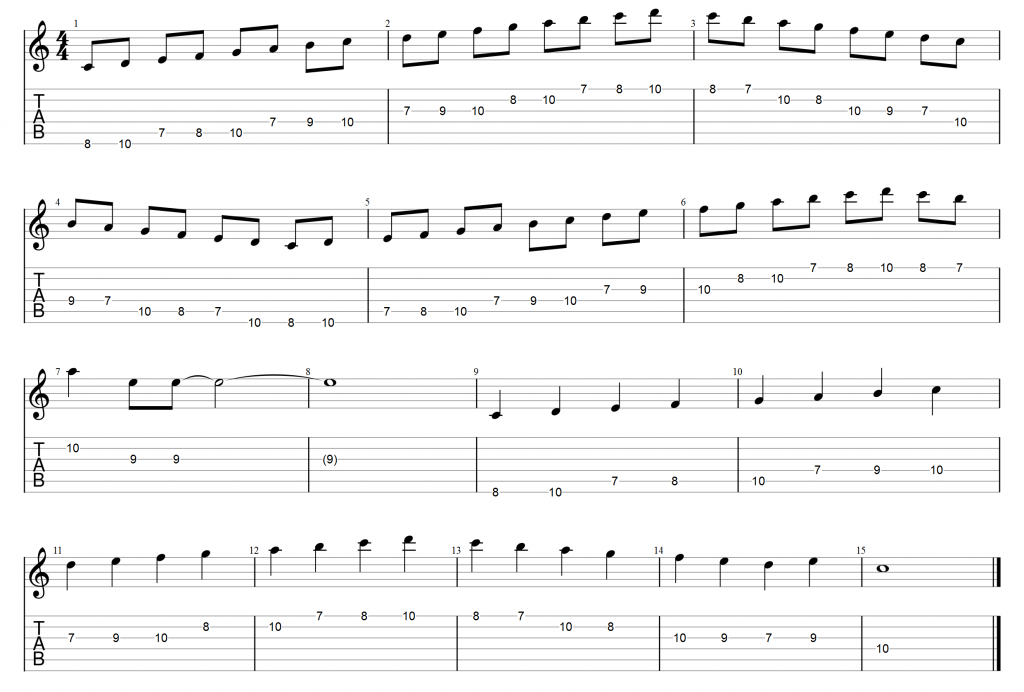
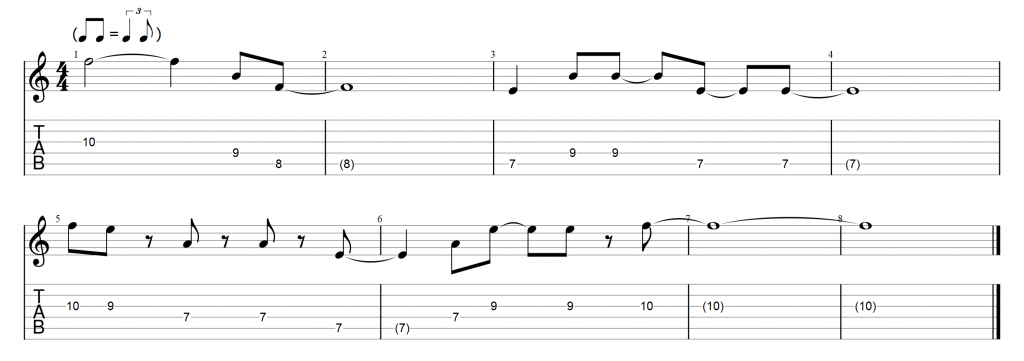
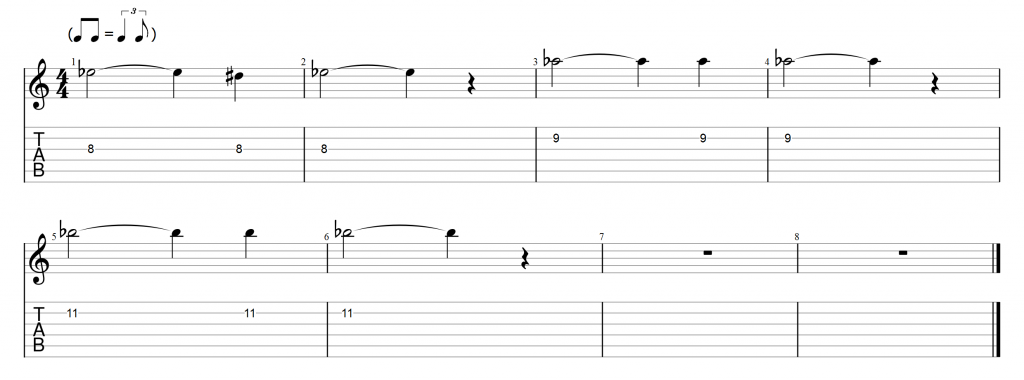
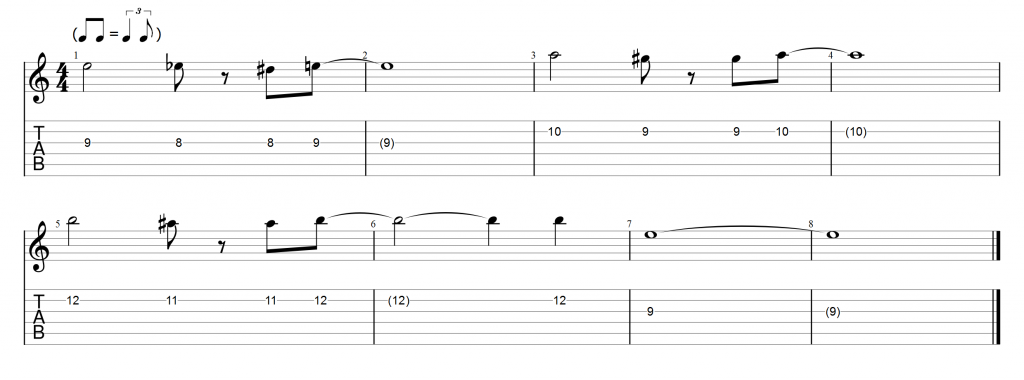

Part 3? Part 4? Part 5 has no comments?
Sorry, not with you?
In parts 1 and 2, there are more than 4 comments but the others have less. why?
People just comment where they want to.
Right.
In your “notes have gone wrong but notes in the scale” example, WHEN YOU RAISE THE NOTES UP ONE SCALE DEGREE, it sounds nice, should it? Can you make a recording of that, Lee?
It’s really down to opinion. Generally, dissonance can sound unpleasing, but not always. Just a matter of trying it and deciding if you think it sounds ok or not. There is an audio with the TAB that gives the idea.
I Have A New Name: Jonathan Hope